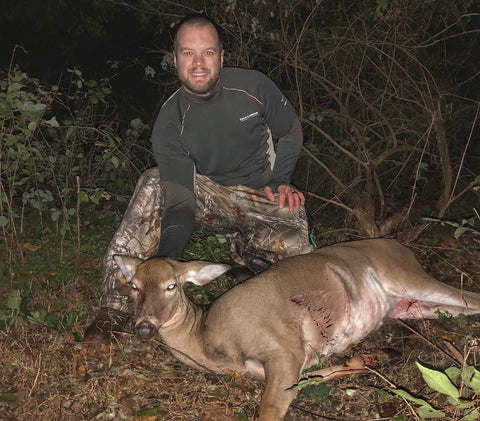Calling Whitetails: 5 ways To Get Deer Close

I was about to tear down for the morning when I saw his rack shining in the late morning sun. I couldn't believe it! I had snort wheezed only a few minutes before that perfect 8-point buck was heading in my direction. He was closing in fast, and as I drew my bow, he stopped behind some small trees, looked up at me, and was out of my life forever.
This wasn't the only time a blind wheeze worked out in my favor. But why? Learning to call whitetails boils down to experimenting with a few sounds and determining when and where those things will work. So, how will you find that thrill this season? There are a couple of ways to entice bucks your way this fall!
1. Practice on Does
Does are among the weariest creatures in the woods. They are even more in tune with their surroundings when little ones are nearby. If you can fool one of those matriarchs, you can fool a bruiser buck. A few tools to do this job include can bleats, tube bleats, and, my favorite, using your voice.

It's important to model a bleat from one of the artificial calls to use your voice as a call. However, you can add more inflection to the bleat with your voice. Making it higher pitched and desperate can attract a big doe to the scene.
I'll never forget the first time I blind bleated a doe into range. I made three whining bleats, heard her stand from her bed, and listened to her run straight to the bottom of my tree in five seconds flat. Had I known that was a thing back then, I may have had my bow in hand before making the noise.
2. Blind Call
Blind calling isn't a popular method to call deer. In fact, it's annoying when you're trying to enjoy a quiet hunt, and someone sitting close by is bleating and grunting away. But I'm not talking about calling over and over and over again.
Blind calling works best with a single grunt or a light snort wheeze separated by no less than thirty minutes. Target times when you know deer might be using a travel corridor or a feeding area within earshot of your position.
3. Contact Call
Grunts and snort wheezes are your best friend in a hopeless situation. Is that buck leaving the scene? Maybe he seemed uneasy, or he was trailing a doe close to coming into heat.

You have more to gain in that situation by sending a contact grunt or wheezing his way. Of course, if you plan to hunt that buck again in the same general location, let him pass along for the day. But if you've got to throw a hail mary, start with a contact grunt. If he turns and looks interested but continues walking away, send a second contact grunt. If the second one doesn't get him to walk your way, snort wheeze until he is committed to heading your way or leaves the scene completely.
4. Respond to Rattling
Rattling isn't for western deer hunters alone. It can work well in any application. But here's the thing: rattling spooks a higher percentage of deer than doing nothing. I've had some luck rattling the last couple of seasons when I hear sounds that could be a deer fighting. Clicking tines, scuffling in the leaves; now and then, you might get it right. If bucks are fighting close by, making them think other bucks are approaching, they will push them to check out the invader.

5. Don't Forget to Listen
Listening to the woods is a key element to effective calling. If you've never heard a deer grunt, one that you can't see, it's a very passive sound. It blends in well with birds chirping and light wind through the leaves.
Keep your ears open. If your brain starts processing something strange, listen hard for a second sound. Capitalizing on sounds can tell you when to respond or if it's a good idea. Will the deer catch your scent if you blow a grunt his way? Be mindful, but get ready for some fun during an active calling situation like this one. A buck willing to make noise is often willing to respond as well.
Author: Aaron Hepler, Exodus Blackhats Team Member





